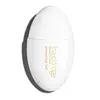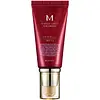What's inside
What's inside
 Key Ingredients
Key Ingredients

 Benefits
Benefits

 Concerns
Concerns

 Ingredients Side-by-side
Ingredients Side-by-side

Water
Skin ConditioningCoconut Alkanes
EmollientIsodecyl Neopentanoate
EmollientGlycerin
HumectantDimethicone
EmollientPEG-30 Dipolyhydroxystearate
EmulsifyingC12-15 Alkyl Benzoate
AntimicrobialSilica
AbrasiveCoco-Caprylate/Caprate
EmollientPolyglyceryl-4 Isostearate
EmulsifyingCorn Starch Modified
AbsorbentOpuntia Ficus-Indica Seed Oil
EmollientHelianthus Annuus Seed Oil
EmollientHydrogenated Castor Oil
EmollientTocopherol
AntioxidantPropylene Carbonate
SolventSqualane
EmollientDimethicone/Vinyl Dimethicone Crosspolymer
Skin ConditioningSalicylic Acid
MaskingSodium Chloride
MaskingSodium Hydroxide
BufferingGlyceryl Caprylate
EmollientSodium Benzoate
MaskingPhenoxyethanol
PreservativeStearalkonium Hectorite
Gel FormingCI 77492
Cosmetic ColorantCI 77499
Cosmetic ColorantCI 77491
Cosmetic ColorantWater, Coconut Alkanes, Isodecyl Neopentanoate, Glycerin, Dimethicone, PEG-30 Dipolyhydroxystearate, C12-15 Alkyl Benzoate, Silica, Coco-Caprylate/Caprate, Polyglyceryl-4 Isostearate, Corn Starch Modified, Opuntia Ficus-Indica Seed Oil, Helianthus Annuus Seed Oil, Hydrogenated Castor Oil, Tocopherol, Propylene Carbonate, Squalane, Dimethicone/Vinyl Dimethicone Crosspolymer, Salicylic Acid, Sodium Chloride, Sodium Hydroxide, Glyceryl Caprylate, Sodium Benzoate, Phenoxyethanol, Stearalkonium Hectorite, CI 77492, CI 77499, CI 77491
Water
Skin ConditioningCyclomethicone
EmollientEthylhexyl Methoxycinnamate
UV AbsorberZinc Oxide
Cosmetic ColorantPropylene Glycol
HumectantTitanium Dioxide
Cosmetic ColorantCaprylic/Capric Triglyceride
MaskingPEG-10 Dimethicone
Skin ConditioningCetyl PEG/PPG-10/1 Dimethicone
EmulsifyingArbutin
AntioxidantParaffinum Liquidum
EmollientGlycerin
HumectantCI 77492
Cosmetic ColorantPolyethylene
AbrasiveTalc
AbrasivePhenyl Trimethicone
Skin ConditioningBeeswax
Emulsion StabilisingSodium Chloride
MaskingCI 77491
Cosmetic ColorantCI 77499
Cosmetic ColorantMethylparaben
PreservativeDimethicone
EmollientPropylparaben
PreservativeRosa Canina Fruit Oil
EmollientSimmondsia Chinensis Seed Oil
EmollientSqualane
EmollientHydrolyzed Collagen
EmollientMacadamia Ternifolia Seed Oil
EmollientDisodium EDTA
Adenosine
Skin ConditioningAlgae Extract
EmollientRosmarinus Officinalis Leaf Extract
AntimicrobialChamomilla Recutita Flower Extract
MaskingSodium Hyaluronate
HumectantFagus Sylvatica Bud Extract
TonicCeramide NP
Skin ConditioningParfum
MaskingHydroxyisohexyl 3-Cyclohexene Carboxaldehyde
MaskingButylphenyl Methylpropional
PerfumingBenzyl Salicylate
PerfumingHydroxycitronellal
PerfumingAlpha-Isomethyl Ionone
PerfumingHexyl Cinnamal
PerfumingLinalool
PerfumingCitronellol
PerfumingWater, Cyclomethicone, Ethylhexyl Methoxycinnamate, Zinc Oxide, Propylene Glycol, Titanium Dioxide, Caprylic/Capric Triglyceride, PEG-10 Dimethicone, Cetyl PEG/PPG-10/1 Dimethicone, Arbutin, Paraffinum Liquidum, Glycerin, CI 77492, Polyethylene, Talc, Phenyl Trimethicone, Beeswax, Sodium Chloride, CI 77491, CI 77499, Methylparaben, Dimethicone, Propylparaben, Rosa Canina Fruit Oil, Simmondsia Chinensis Seed Oil, Squalane, Hydrolyzed Collagen, Macadamia Ternifolia Seed Oil, Disodium EDTA, Adenosine, Algae Extract, Rosmarinus Officinalis Leaf Extract, Chamomilla Recutita Flower Extract, Sodium Hyaluronate, Fagus Sylvatica Bud Extract, Ceramide NP, Parfum, Hydroxyisohexyl 3-Cyclohexene Carboxaldehyde, Butylphenyl Methylpropional, Benzyl Salicylate, Hydroxycitronellal, Alpha-Isomethyl Ionone, Hexyl Cinnamal, Linalool, Citronellol
 Reviews
Reviews

Ingredients Explained
These ingredients are found in both products.
Ingredients higher up in an ingredient list are typically present in a larger amount.
Ci 77491 is also hydrated iron III oxide. It's sole purpose is to give a red/pink hue to products.
Iron III oxides are classified as inorganic chemicals for coloring.
Synthetically created Ci 77491 is considered safer than those naturally found. This is because the synthetically created version may contain less impurities. Iron oxides are generally non-toxic and non-allergenic.
Learn more about CI 77491Ci 77492 is also hydrated iron III oxide. It's sole purpose is to give a yellow hue to products.
Iron III oxides are classified as inorganic chemicals for coloring.
Synthetically created Ci 77492 is considered safer than those naturally found. This is because the synthetically created version may contain less impurities. Iron oxides are generally non-toxic and non-allergenic.
Learn more about CI 77492Ci 77499 is also hydrated iron III oxide. It is created from mixing red and black iron oxides. This helps give shades of darkness to a product.
Iron III oxides are classified as inorganic chemicals for coloring.
Dimethicone is a type of synthetic silicone created from natural materials such as quartz.
What it does:
Dimethicone comes in different viscosities:
Depending on the viscosity, dimethicone has different properties.
Ingredients lists don't always show which type is used, so we recommend reaching out to the brand if you have questions about the viscosity.
This ingredient is unlikely to cause irritation because it does not get absorbed into skin. However, people with silicone allergies should be careful about using this ingredient.
Note: Dimethicone may contribute to pilling. This is because it is not oil or water soluble, so pilling may occur when layered with products. When mixed with heavy oils in a formula, the outcome is also quite greasy.
Learn more about DimethiconeGlycerin is already naturally found in your skin. It helps moisturize and protect your skin.
A study from 2016 found glycerin to be more effective as a humectant than AHAs and hyaluronic acid.
As a humectant, it helps the skin stay hydrated by pulling moisture to your skin. The low molecular weight of glycerin allows it to pull moisture into the deeper layers of your skin.
Hydrated skin improves your skin barrier; Your skin barrier helps protect against irritants and bacteria.
Glycerin has also been found to have antimicrobial and antiviral properties. Due to these properties, glycerin is often used in wound and burn treatments.
In cosmetics, glycerin is usually derived from plants such as soybean or palm. However, it can also be sourced from animals, such as tallow or animal fat.
This ingredient is organic, colorless, odorless, and non-toxic.
Glycerin is the name for this ingredient in American English. British English uses Glycerol/Glycerine.
Learn more about GlycerinChances are, you eat sodium chloride every day. Sodium Chloride is also known as table salt.
This ingredient has many purposes in skincare: thickener, emulsifier, and exfoliator.
You'll most likely find this ingredient in cleansers where it is used to create a gel-like texture. As an emulsifier, it also prevents ingredients from separating.
There is much debate on whether this ingredient is comedogenic. The short answer - comedogenic ratings don't tell the whole story. Learn more about comegodenic ratings here.
The concensus about this ingredient causing acne seems to be divided. Research is needed to understand if this ingredient does cause acne.
Scrubs may use salt as the primary exfoliating ingredient.
Learn more about Sodium ChlorideSqualane is an emollient that helps the skin hold onto moisture. It's an oily liquid that occurs naturally in certain types of fish and plant oils.
Because squalane boosts hydration in the skin, it also comes with plenty of benefits: it is an antioxidant and can help fight free radicals and skin damage. Squalane is also found to have a detoxifying effect when applied.
Squalane comes from squalene, which occurs naturally within the sebum of our skin. It is one of the oils our skin produces to keep itself hydrated. Squalane is the hydrogenated version of squalene and has a longer shelf life.
Research shows that squalane is non-irritating (even at 100% concentration).
In general, it's a fantastic ingredient. It does a great job at hydrating the skin, and it's suitable for those with sensitive skin.
The source of squalane may impact malassezia / fungal acne. This is because olive oil derived squalane can contain impurities such as fatty acids and plant waxes. Sugarcane derived squalane is recommended for anyone with malassezia concerns.
Is squalane vegan?
This depends on the source. Squalane can be derived from both plants and animals. Most squalane used in skincare comes from plants.
Please note: the source of squalane is only known if disclosed by the brand. We recommend reaching out to the brand if you have any questions about their squalane.
Read more about squalene with an "e".
Is squalane an oil?
Squalane is often called an oil, but it’s technically not; it’s a hydrocarbon, meaning it’s only made of carbon and hydrogen, unlike true oils which are triglycerides made of fatty acids and glycerol.
The term “oil-free” isn’t regulated, so companies can define it however they want. Some exclude all oils, while others just avoid mineral oil or comedogenic oils.
While some people avoid oils thinking they cause breakouts, the right kind of oil (or oil-like ingredient like squalane) can actually help balance and hydrate your skin. It’s worth testing out simple oils or squalane to see what works best for your skin.
Learn more about SqualaneWater. It's the most common cosmetic ingredient of all. You'll usually see it at the top of ingredient lists, meaning that it makes up the largest part of the product.
So why is it so popular? Water most often acts as a solvent - this means that it helps dissolve other ingredients into the formulation.
You'll also recognize water as that liquid we all need to stay alive. If you see this, drink a glass of water. Stay hydrated!
Learn more about Water